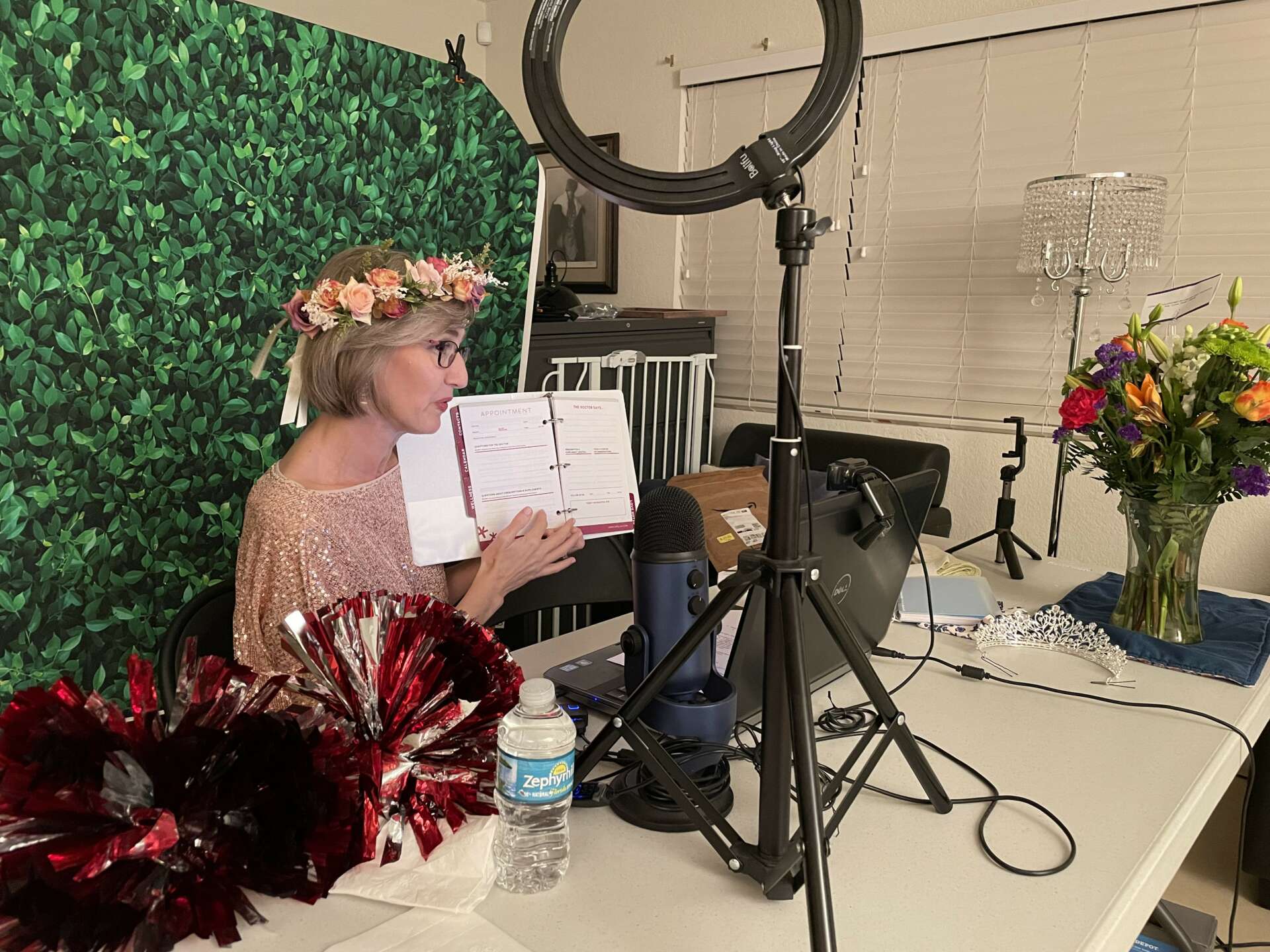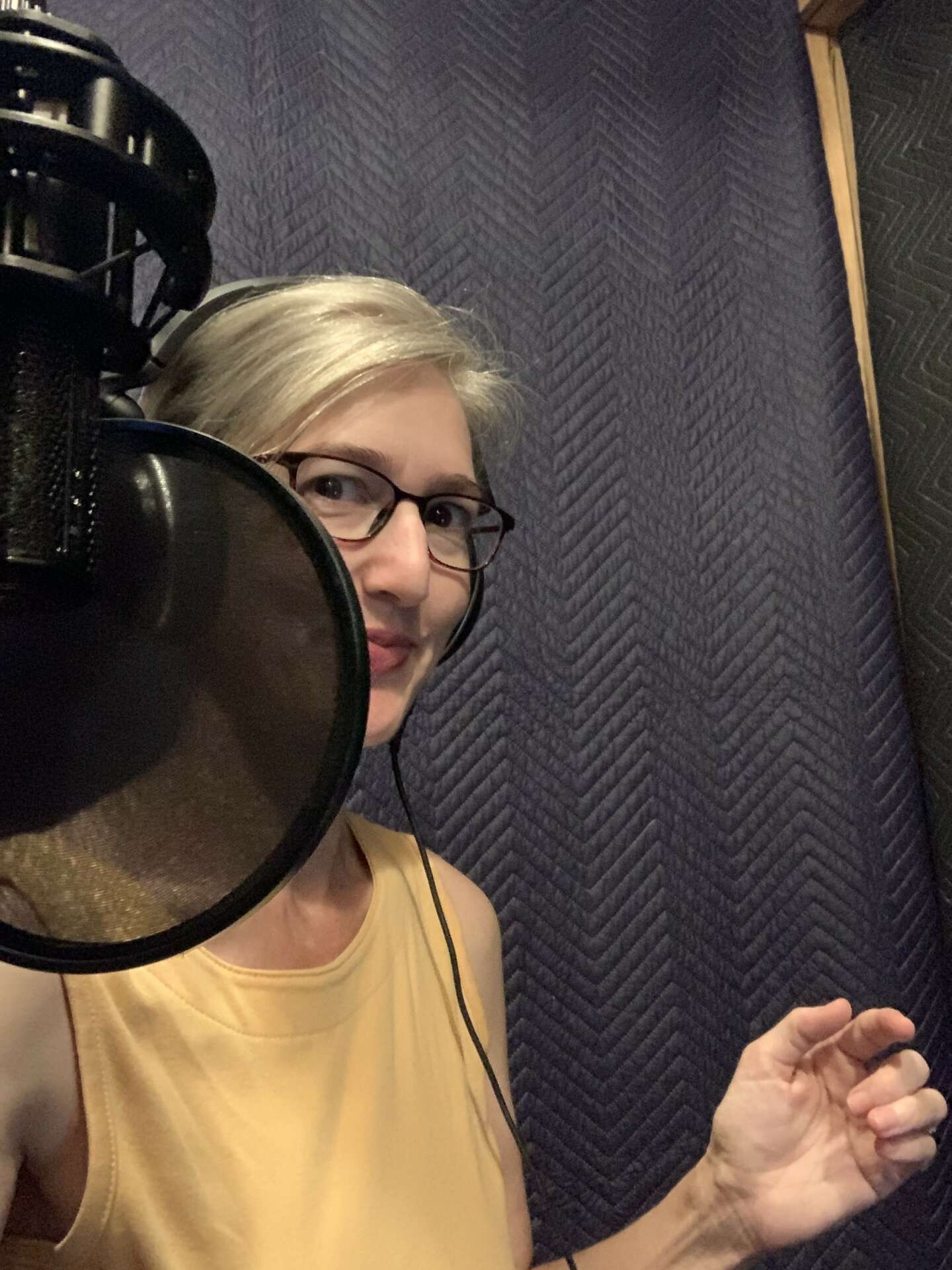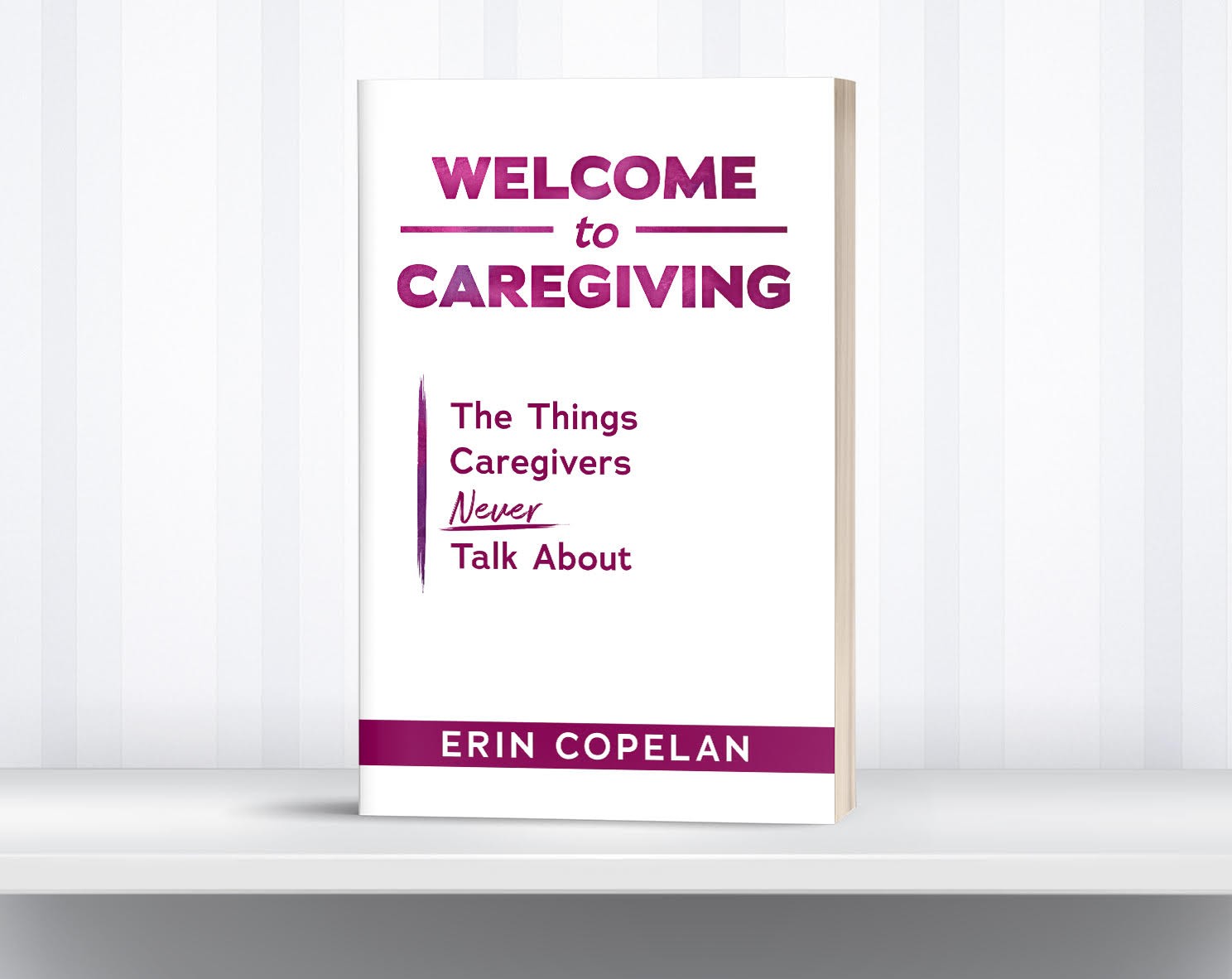We’re excited to introduce you to the always interesting and insightful Erin Copelan. We hope you’ll enjoy our conversation with Erin below.
Erin, thanks for joining us, excited to have you contributing your stories and insights. Can you talk to us about serving the underserved.
“I want to be a Caregiver when I grow up.”
Said no one ever.
Caregiving sneaks up on you, unexpectedly, in a most unpleasant way. You could be caring for a child with a broken arm over the summer. It could be a pandemic. It could be an aging parent who just doesn’t remember anymore. It could be your spouse. Cancer.
The suddenness leaves you unsettled. The “other duties as assigned” leave you overwhelmed. The medical jargon can make your head spin. And your heart. Oh, your heart. The trauma of the pain, guilt, sadness, and fear take residence in your physical body. You don’t want to talk about it… because it’s not about YOU. It’s about the patient. Them getting well. Keeping them comfortable. It’s about life or death.
My husband was diagnosed with liver cancer and I was his sole caregiver for over a decade. Together we navigated multiple surgeries and a successful liver transplant, in multiple states, with multiple medical centers (because what fun is cancer if you can’t move around the country a few times while you’re trying to navigate it?). Each scenario challenged my voice and my mental health in a different way. I didn’t know how to ask for help. And the recovery? My husband recovered faster from his liver transplant than I did.
I’m not an angel sent from heaven. I didn’t have caregiving resources that spoke to ME. I believe that’s why I was called to share my experience. To help the underserved caregiving community with my crazy stories. The ones that kinda make me cringe with embarrassment, the ones that are really laugh out loud funny, and the ones that still choke me up when I talk about them years later. I wasn’t called to tell you how to BE a Caregiver; I was called to help soften the caregiver journey.
Because there’s no wrong way, there’s no right way, there’s only love.


As always, we appreciate you sharing your insights and we’ve got a few more questions for you, but before we get to all of that can you take a minute to introduce yourself and give our readers some of your back background and context?
I was (and still am) very much a “Desert Tortoise” type of Caregiver. The desert tortoise is a creature of solitude. It will hide in its shell and hiss and grunt at those who try to get in. I thought the thick shell protected me. In hindsight, instead of keeping others out, it more effectively kept ME in… I didn’t want to be a bother. I didn’t ask for help. I didn’t know how. Don’t get me wrong – I still like my solitude when I’m in caregiving mode. For example, I don’t like people waiting with me at the hospital. I like to eat, wander, sleep, cry, or play endless rounds of CandyCrush to numb my worried mind. And I like to do it all on my schedule, when I want to, when I need to.
Some Caregivers are like gangs of Meerkats. They want the village. I remember seeing entire families in hospital waiting rooms. Taking shifts. Bringing coffee. Appearing with a blanket. Sharing hugs. Wiping tears. Popping in and out like little meerkats poking their heads up from the valley floor. Watching from a distance, I felt like it brought them all comfort.
One of the lessons I was so grateful to learn on my journey was that there truly is no right way and no wrong way to navigate caregiving. In my work I strive to create tools to help soften the caregiving journey. My book is intended to help Caregivers feel like, “YES – that’s it! Someone gets it!” I created “The Patient Handbook” as a practical organizational tool to help Caregivers and patients better communicate with each other and their medical teams. Most recently I created the free resource “Ten Ways to Support a Caregiver (and one thing to NEVER do)” to help people support the Caregivers in their lives.
I’m excited about upcoming events to speak with groups about different ways to help Caregivers navigate this unexpected chapter of their lives. I’m also so grateful to be connecting one-on-one with Caregivers to help develop the next round of resources to support this underserved community.
Let’s talk about resilience next – do you have a story you can share with us?
AS LONG AS it’s the day after the move, I’ll be fine.
“This is the master bedroom,” I told the moving foreman. “You can put the bed on the wall under the window. I’ll need to play with the dressers if you don’t mind moving them around for me.”
We had just arrived at our new house. We hadn’t even moved everything out of the rental we had occupied for the past two years. To save money, we hired a company to move the big stuff. We had two weeks to go back and pack up the kitchen, the Florida room, and the garage ourselves.
The foreman returned to his crew on the moving truck.
I walked into our new living room and noticed Jerry out-side on the phone. It was summer once again. I don’t know why we always choose to move when it’s so hot you can see the ripples in the air and smell the salty sweat on your own skin.
“Now? Well, I’m moving right now,” Jerry said nonchalantly. “It’s really not a good time. The movers are unloading the truck as we speak.”
I felt a little prickle down my spine, and I poked my head out the sliding glass door, curious. “Who is that?”
“It’s Karen at Cleveland Clinic. They have a liver for me. But it’s not a good time.”
I yanked the phone away from his ear. “Karen, it’s Erin. How much time do we have?”
“I can give you fifteen minutes. Call me on my cell. If I don’t hear from you, I have to move to the next person on the list.”
As long as it’s the day after the move, I’ll be fine.
I hung up the phone. We sat in the July sun. It was another beautiful, flawless Florida day. We sat on our patio chairs – the only two things that had been offloaded from the truck so far.
“But the boxes,” he said. “What are you going to do with all the boxes? I can’t leave you to deal with this mess.”
“Jerry, I can handle boxes. What we need to talk about is if there’s a reason you don’t want to have the transplant. At all.”
“You’re supposed to go to your direct sales convention thing next week. You wouldn’t be able to go.”
“That doesn’t matter. If it was another day, would you take the liver?”
“Yes.”
“I can handle the boxes. It’s just stuff. We will sort it out. We missed one liver. This one is yours.”
As long as it’s the day after the move, I’ll be fine.
We called Karen back with minutes to spare and got all the details. With less than eight hours before Jerry had to check in at the hospital, we no longer had the luxury of time. We told the movers to put our furniture anywhere. “Just get it off the truck and into the house. We have to get to the hospital.”
As we drove back to the old house to collect the cats, we started making phone calls. Jerry called his brother. I called my mother. Back and forth we went, assigning roles for the phone tree. “There is a liver for Jerry. He’s going in for his transplant. Yes, today. Yes, now. Yes, I’ll call you later. Yes, I’ll text you with updates. Love you, too.”
It was after 9:00 p.m. With Jerry’s pre-surgery food restrictions, our dining options had become as limited as our remaining time. We had no cooking supplies at the new house, so we went through the Boston Market drive-through and brought home two tall plastic containers of chicken soup.
We sat at our familiar table, in a foreign home – our new home – swirling the soup with plastic spoons. The adrenaline quashed our hunger. Towers of boxes surrounded us. We took time together to make the bed so I’d have a place to fall into when I got home. The cats crept around, exploring, smelling their beds and bowls and trying to figure out how they fit into the new environment.
As long as it’s the day after the move, I’ll be fine.
The parking lot was empty when we arrived at the hospital that night. We pulled into a space under a light post, a monument I could hopefully remember. Jerry handed me the keys.
The air was warm and silent. It was 12:30 a.m. Technically, the hospital was closed, so we followed our instructions and checked in through the emergency room. They were expecting us.
We were taken to a private room, and Jerry changed into his gown – yellow with little imprints of the green and blue Cleveland Clinic logo. The organ had not yet arrived. They inserted his IV. Waiting.
We had the opportunity to sleep, but sleep didn’t come easily. Until they gave us the green light, a chance still remained that the organ would not be viable and they’d send us home.
I climbed into the hospital bed with Jerry, our bodies wedged together between the plastic rails. I lay on my side with my head nestled on his chest. We watched TV, dozing in and out of sleep, startled awake by the memory of why we were there or by a loud commercial.
At 7:00 a.m. on July 19, 2016, the nurse came in. “We’re ready.”
Fear slapped me in the face. Until that moment, we were living in a miracle. The Call meant life. It meant hope. The moment they said, “We’re ready,” all I could see were scalpels, blood, and unconsciousness. Raw and unchained, it was fear.
The hospital staff wheeled the bed onto the elevator and down to the operating room. We kissed. We shared whispers of private words. The team took him back. It was the day after our move.
As long as the transplant happens the day after our move, I will be fine.



For you, what’s the most rewarding aspect of being a creative?
The most rewarding aspect of my creative work is definitely having the opportunity to connect with other Caregivers. Folks who have walked the walk and share with me, “Yeah, that’s exactly what it’s like, you nailed it.” Even more rewarding are the messages I received from Caregivers who have reached out to me in the middle of their journey to share with me how much they appreciated the humor I used when sharing my stories (oh the healing beauty of laughter!). Or the relief they feel for being more organized with “The Patient Handbook.” My favorite are the stories about Caregivers finding the ability to reconnect with themselves, even for just a moment (because many times we only HAVE a moment), by using the resources in my workshop, “Taking the Pause: Redefining Self Care.” The intention of all of my tools is to be a springboard for Caregivers to help them find their own way, so it makes my heart smile when I hear a story about how a Caregiver added a special twist to one of my resources to make it their own.
Contact Info:
- Website: www.ErinCopelan.com
- Instagram: https://www.instagram.com/erin_copelan
- Facebook: https://www.facebook.com/WelcomeToCaregiving/
- Linkedin: https://www.linkedin.com/in/erincopelan/
- Youtube: https://www.youtube.com/channel/UCNBLgdy_R4Yq4k56zWYcPAA
Image Credits
Kaycie Davis


